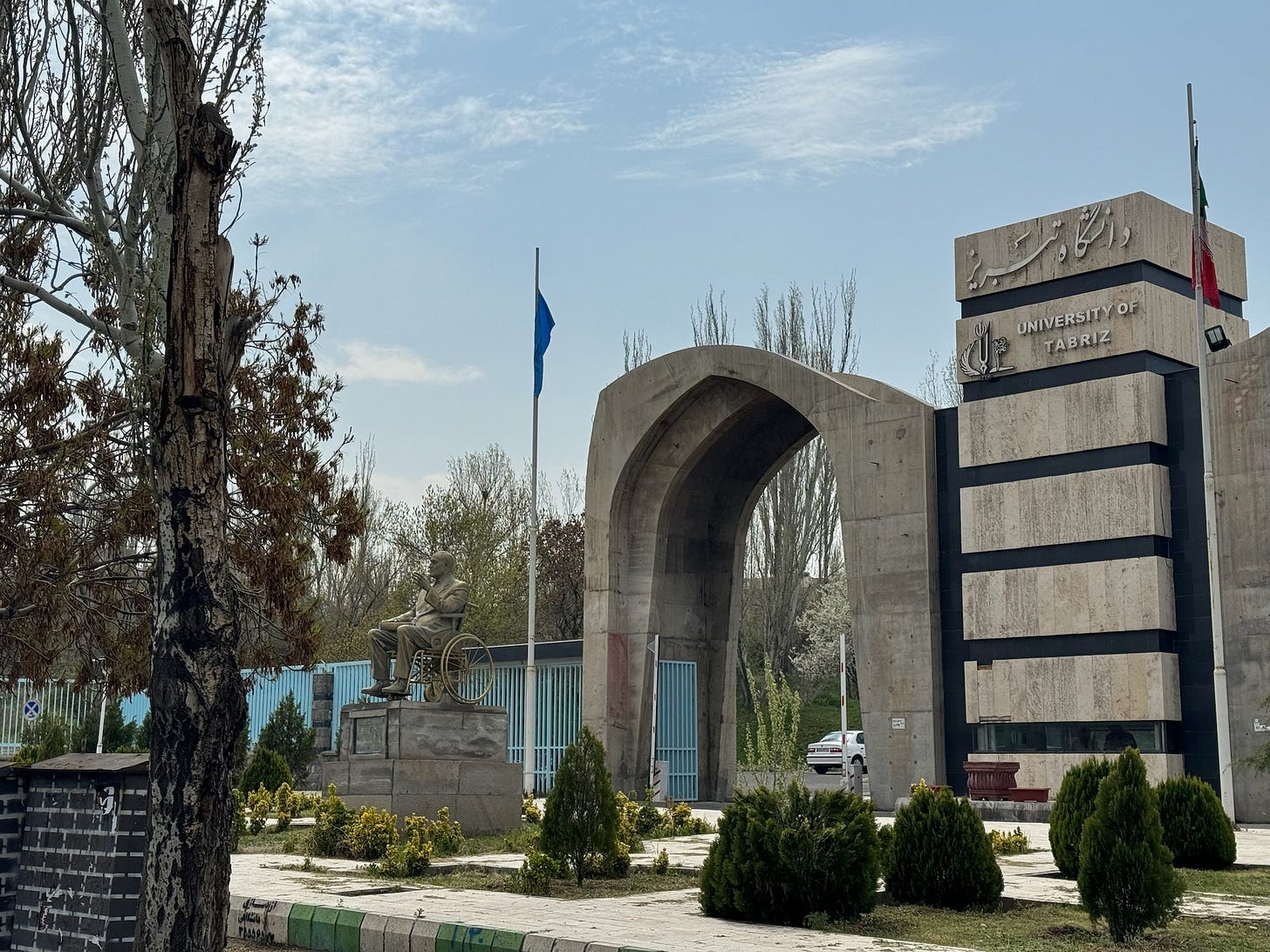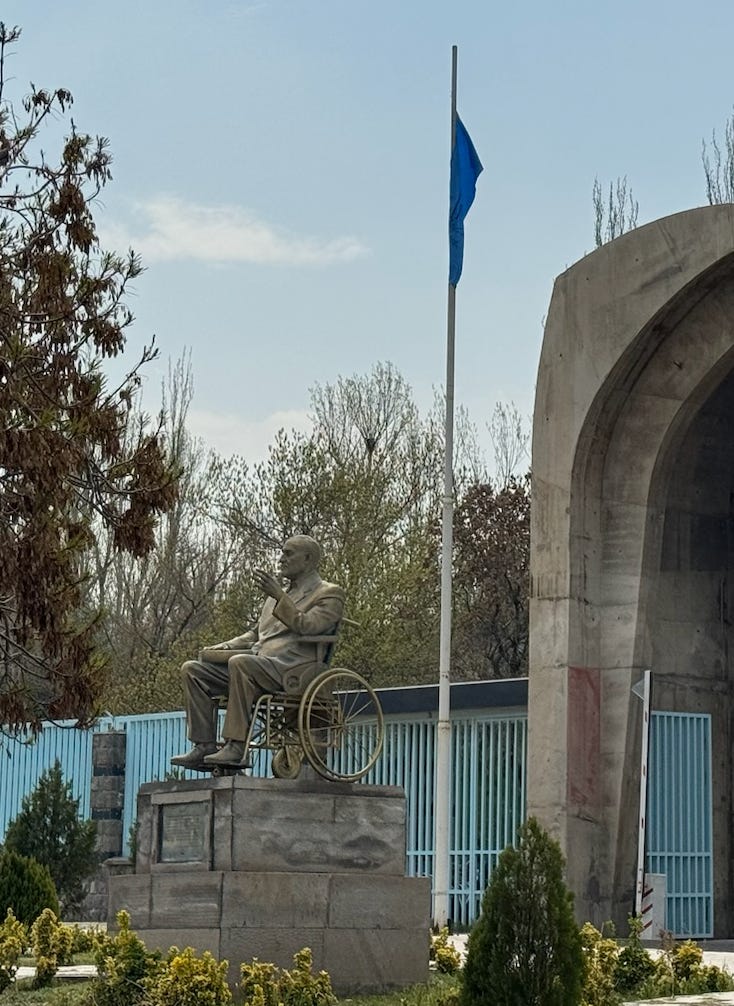University of Tabriz
Leaving Tabriz after two intense and interesting days, I passed the entrance of the University of Tabriz campus. I had just set off, and didn’t feel like exploring the campus and postponing my actual stage towards a place called Bostanabad which I aimed to reach that night. I had read somewhere that this was a site of occasional protest against the Iranian security forces and their dress code enforcements, but today, when I looked inside through the gates, it seemed rather sleepy.
One thing caught my eye, immediately giving this top 10 Iranian university a peculiar twist. In front of the entrance stood a large statue of a civilian man holding a book. After all the statues of clerics and military figures I had seen, this was already a remarkable change of tune. What made it even more unusual was that this statue depicted a man sitting in a wheelchair. I was used to seeing human figures in bronze or stone, wielding weapons, holding flags, or making articulate gestures. Or equestrian statues symbolizing agency, freedom and the determination to use it. But here it was an older man, dressed in an oversized suit, resting one arm on the wheelchair’s armrest, while holding a closed book on his lap.
Suddenly, the speculation came to me that, with all I had experienced so far in Iran, an impression emerged that this country had nothing against the anti-hero, the underdog. Or, for that matter, that it could see greatness in an iconography of the fragile.
This post contains a preview of a forthcoming book about Journey to the East, highlighting the perpetuating tensions and sometimes awkward dialogues between East and West as found on my quest for a New Silk on an Old Road.



